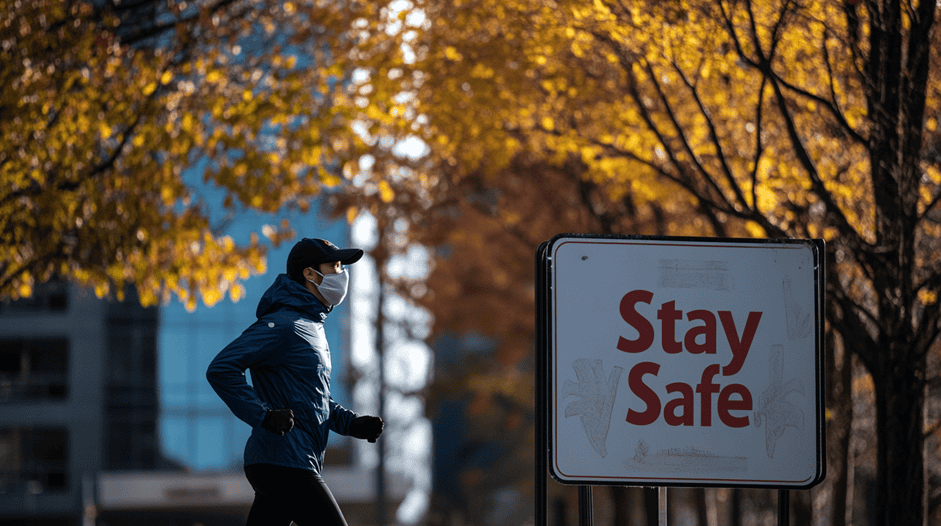8730 Wilshire Boulevard, California 90211
Get Help Now
8730 Wilshire Boulevard, California 90211
Get Help Now

In recent years, jogging and running have solidified their place as popular forms of exercise, providing physical and mental health benefits. The surge in outdoor exercise during the coronavirus pandemic highlighted the importance of fitness in promoting overall well-being.
Did you know engaging in at least 30 Minutes Of Jogging most days of the week can have a significant impact on your overall health? It can potentially reduce the risk of chronic conditions such as heart disease and diabetes.
Now, as we navigate a post-pandemic world, it’s important to revisit the practices and challenges associated with running to ensure safety and enjoyment for everyone.
The pandemic inspired many to take up jogging as gyms closed and people sought outdoor activities. Today, running remains a preferred way to stay active, with many citing its accessibility and stress-relieving benefits. Casual runners, who previously ran once or twice a week, often report maintaining increased activity levels, whether for fitness or simply to enjoy the outdoors. This growth underscores the need for safer running environments and greater awareness of associated risks.
Running groups and community events have also become more popular in 2025, providing opportunities for social interaction and motivation. Technology, such as fitness trackers and virtual running clubs, continues to play a significant role in encouraging participation and helping runners monitor their progress.
Running just 10 Minutes A Day can dramatically reduce your risk of cardiovascular disease. Runners are up to 50% less likely to die from heart-related conditions. Additionally, regular running helps lower your resting heart rate, reducing the number of times your heart beats per minute while at rest.
While public health concerns about the spread of respiratory illnesses through outdoor exercise have diminished, safety issues related to running persist. These include risks from uneven surfaces, security threats, and liability challenges. Here’s a closer look at how these concerns impact modern runners:
Unpaved Trails: Natural trails made of gravel or dirt offer scenic beauty but can pose hazards. Erosion and wear can create potholes or uneven terrain, leading to potential injuries such as sprains, fractures, or even internal injuries if falls occur. Prompt medical attention is crucial for these injuries, as delays can exacerbate conditions. Additionally, environmental factors like rain and wildlife can sometimes make these trails more hazardous, requiring extra caution from runners.
Paved Trails: Wide sidewalks and paved paths, commonly found in urban areas and residential neighborhoods, minimize certain risks but introduce others. Slightly uneven surfaces—which may not be immediately visible—can trip even seasoned runners. For older runners or those with gait disorders, these hazards can result in severe injuries. Maintenance efforts in 2025 have improved the quality of many urban running paths, but vigilance remains key.
Running in isolated or semi-isolated areas remains a concern, especially for women. Studies reveal that harassment during runs continues to be a widespread issue, with incidents ranging from verbal abuse to physical confrontations. Runners also face risks of violent crimes, particularly when exercising alone at night. Staying aware of surroundings, running in groups, and avoiding poorly lit areas are key strategies for minimizing risks.
The rise of safety technology has been a game-changer in 2025. Personal safety devices, such as GPS trackers and wearable alarms, are now widely available and used by runners to alert authorities or loved ones in case of emergencies. Apps that track real-time locations and send alerts if a runner deviates from their planned route are becoming more popular as well.
Climate change has had a noticeable impact on running conditions. Extreme weather events and unpredictable temperature changes are increasingly common, making it essential for runners to plan their workouts carefully. Staying hydrated, wearing weather-appropriate gear, and avoiding running during heat waves or icy conditions are important considerations in 2025.
If a runner is injured on a trail, determining liability can be complex. The responsibility for maintaining running paths typically falls to the landowner or governing body. This includes ensuring the safety of both the physical environment and trail users.
Key factors in liability include:
Special rules apply to government-maintained trails, where liability might depend on specific conditions, such as whether the injured party had proper access or if negligence can be clearly proven. In 2025, advancements in smart monitoring systems have made it easier to track and address these issues, providing more robust evidence in liability cases.
Jogging and running remain effective ways to stay fit and enjoy the outdoors. However, modern runners must navigate a range of safety challenges—from physical hazards on trails to personal security concerns and environmental factors. By staying informed, leveraging technology, and taking appropriate precautions, runners can continue to reap the benefits of this popular activity.
For questions about injuries or legal rights related to jogging and running, consult an experienced Personal Injury Attorney from the Law Offices of Eslamboly Hakim! Prioritize safety, and happy running! Schedule a Free Consultation today!
Tag: